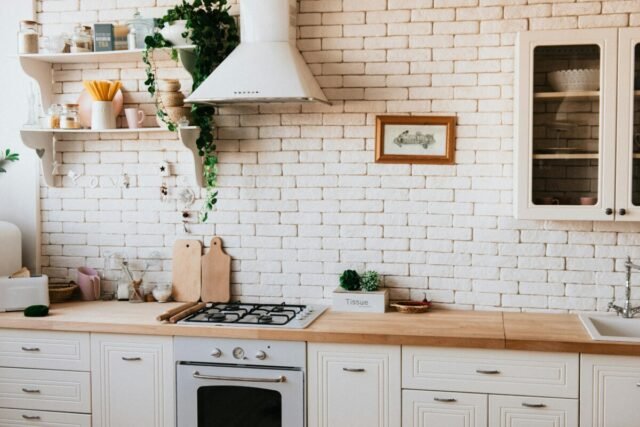Having an organized kitchen can make a world of difference when it comes to cooking and meal preparation. A well-organized kitchen reduces stress, saves time, and allows you to enjoy the cooking process more. With the right layout, storage solutions, tools, and regular maintenance, you can optimize your kitchen for efficiency. This article explores various tips and strategies for organizing your kitchen to promote smooth and seamless cooking.
Kitchen Organization Basics
Kitchen organization refers to the deliberate structuring of your kitchen space and items to promote order and efficiency. The main goal is to make everything easily accessible so that cooking and meal prep feel effortless. Effective kitchen organization depends on principles such as decluttering, proper zoning, utilizing vertical space, and investing in functional storage solutions.
When organizing your kitchen, you must first start with the basics – declutter and get rid of anything you don’t need. Sort through gadgets, utensils, and containers. If you haven’t used an item in over a year, it’s probably safe to give it away or throw it out. Proper zoning entails placing items in logical areas based on usage. For example, pans should be near the stove while plates and cups near the dishwasher. Make use of vertical space by installing racks, shelves, and pegboards. Finally, incorporate storage solutions like cabinets, pantries, and drawers to house essentials.
Decluttering and Organizing Your Kitchen
Decluttering is the first critical step in any kitchen organization project. It entails clearing out all unnecessary items taking up precious space. Here are some tips for decluttering your kitchen:
- Take everything out of your cabinets, drawers, and pantries. Get a full view of what you actually have.
- Discard expired food items and containers you no longer use. Recycle or donate usable items.
- Group similar items together – utensils, cookware, appliances, etc.
- Purge items you have duplicates of or haven’t touched in over a year. Be ruthless.
- Clean cabinets, drawers, and shelves before returning items.
When organizing, categorize items into zones – food storage, dishes, cooking tools, appliances, etc. Label containers and shelves for easy identification. Utilize vertical space through hanging racks and wall-mounted shelves. Install organizing units inside cabinets to maximize usable space. Maintain this system through regular purging and tidying. An organized kitchen takes effort to maintain.
Optimizing Kitchen Layout for Efficiency
An efficient kitchen layout allows you to seamlessly move between key zones – the sink, stove, and refrigerator. This space is called the kitchen work triangle. Optimizing the angles and distance between these three points streamlines food preparation and cooking. Here are some kitchen layout tips:
- The three work zones should be adjacent with clear pathways between them.
- If possible, the triangle should be a shape where each leg is between 4 to 9 feet.
- Avoid placing the stove directly opposite the refrigerator to prevent traffic congestion.
- Ensure good lighting over the sink, stove, and other prep areas.
- Keep high-use items easily accessible. Install pot racks, knife strips, and spice racks.
- Have a garbage zone for food scraps and compost near the prep area.
Pay attention to how you move through the kitchen during cooking. Adjust the layout to minimize excessive movements that slow you down. Maintaining organized work zones also promotes efficiency.
Maximizing Kitchen Storage
Storage plays a huge role in kitchen organization. Maximize every inch of available space through cabinets, drawers, shelves, and pantries. Consider these tips for optimal kitchen storage:
- Install floor-to-ceiling pantry cabinets or shelving units. Use lazy susans in corner cabinets.
- Use vertical space on walls for mounted spice racks, knife holders, and pot racks.
- Dedicate drawers near the stove for utensils and near the fridge for food storage.
- Purchase drawer organizers and turntables to maximize vertical storage.
- Use lid racks, pan organizers, and hanging racks for awkward cookware.
- Label everything clearly so items can be returned to their designated spots.
Take time to organize your pantry and fridge. Group like items together and use organizers to prevent a jumbled mess. Investing in functional storage solutions tailored to your space helps maximize usage.
Essential Kitchen Tools and Gadgets
Having the right kitchen tools and gadgets can greatly improve cooking efficiency. Equip your kitchen with these essential items:
- Good knives – chef’s knife, paring knife, serrated knife, and knife sharpener
- Cutting boards (at least 2) – plastic for meat and wood for produce
- Mixing bowls – small, medium and large
- Dry and liquid measuring cups
- Measuring spoons
- Spatulas, slotted spoons, tongs, and ladles
- Whisks, turners, and wooden spoons
- Can opener, vegetable peeler, grater, and zester
- Mixer or food processor
- Bakeware – muffin tins, cake pans, baking sheets
- Colanders and strainers
- Salt and pepper mills
- Kitchen scissors and kitchen timer
Specialized gadgets like air fryers, slow cookers, rice cookers, and instant pots also improve efficiency for frequent meals. Invest in quality tools that make cooking easier and more enjoyable. Properly organizing them also optimizes your meal prep time.
Maintaining an Organized Kitchen
Creating an organized kitchen is half the battle – maintaining it is key for long-term success. Here are some tips for keeping your kitchen clutter-free:
- Put items back in their designated storage spots after using them.
- Do quick tidy-ups during and after cooking – wash used dishes, wipe counters, take out trash.
- Do a deep clean weekly to keep everything dust-free and organized.
- Regularly purge unused items and food to prevent clutter accumulation.
- Designate zones like counters and tables for temporary storage during cooking.
- Consider recycling and composting systems to reduce waste sustainably.
Developing the habit of cleaning as you go and putting things away immediately eliminates mess. Maintaining organization is easier with consistent maintenance and sticking to the system.
Conclusion
A functional, clutter-free kitchen minimizes stress and makes cooking enjoyable. Use these kitchen organization tips to optimize your layout, storage, and tools. Invest time upfront to implement an efficient system. Maintain the organization through regular tidying, purging, and deep cleaning. With some effort, you can create a kitchen that maximizes productivity and minimizes effort. What are you waiting for? Get organizing!































